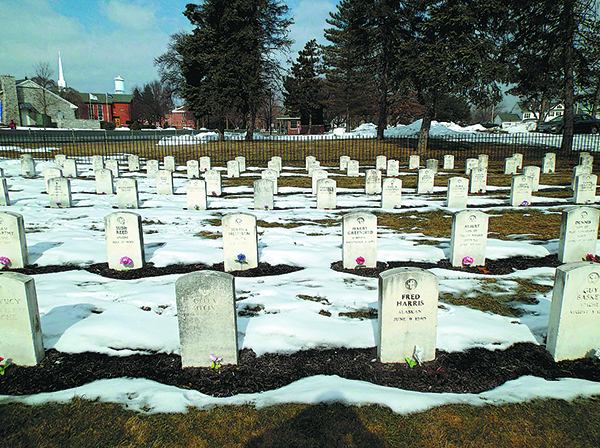

The Native American journalist Mary Annette Pember, in an article for The Atlantic titled Death by Civilization, recalls how her late mother, who attended a Native American boarding school run by the Catholic Church, "would spend hours washing the laundry 'white, white' like the sisters had taught her".
"We may be Indian, but by God we ain't dirty," Pember, who watched with "tense stomach muscles", recalled her mother saying as she hung baskets of heavy, wet sheets on the line.
Some students committed suicide while at school, but many more who found it unbearable ran away. Some succeeded, others were captured and brought back, bounties being offered by some schools. Some may have disappeared along the way.
"The Haskell campus used to be much larger than it is today, with the south edge of the campus moving into a wetland area that once upon a time went on for miles," says Anderson of the days when Haskell, with Carlisle, was one of the country's flagship off-reservation boarding schools. "If students were to run away, that's the direction most of them would go.
"Given the fact that Kansas is a place of extremes in weather-the temperature can drop for 40 degrees Fahrenheit (about 20 degrees Celsius)-it would not surprise me if a runaway student who was exposed to the elements and who understandably was traveling light, succumbed to weather while trying to traverse the wetland. This is not to mention getting stuck in the swampy ground. I guess you could call those unmarked graves."
Yet the longing for home was so strong, longing intensified by the fact that many students, once enrolled in the boarding schools, were unable to return to see their parents for years on end. To eliminate anything that would undermine the assimilation process, Pratt invented a system called outing whereby students were required to work during school holidays-usually boys on farms or in factories owned by white men and girls in white households.
Even during a normal school day, students routinely spent half a day in the classroom and the other half engaged in vocational training. Consequently, most students never received more than a primary education for the years spent there. Critics see this tendency to industrialize as an upper-class strategy for social control and order.